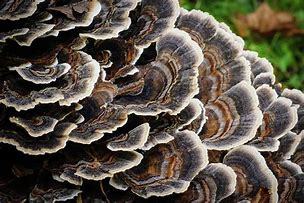Cleaning up Toxic Waste using Mushrooms
Through a process called mycoremediation, mushrooms can be used to remove chemicals from the soil and heavy metals from water through their mycelium (one of nature’s most resilient living organisms, fire-resistant, water-retardant, vegetative part of a fungus). Research suggests that mushrooms can convert pesticides and herbicides to less harmful compounds, remove heavy metals from brownfield sites (land that was once used for industry and now lies useless), and break down plastic. The main idea of mycoremediation is to use a fungi’s natural decomposition abilities to restore and regenerate land. With fire return intervals becoming increasingly shorter and fire severity growing more intense, ecologists have started to use mushrooms to repair severely scorched soil.
Most of the breakdown of toxins/waste takes place before the fruiting body is formed.
The waste is typically fully absorbed by the fungus within a few weeks. The enzymes produced by a mushroom are able to break down a lot of different pollutants and the mycelia (mycelium plural) ‘digest’ the surface they grow on and convert it into nutrients and possibly edible mushrooms. Some species of fungi are being “trained” in labs to digest things like polypropylene face masks and plastic gloves.
Mushrooms have been used to clean up oil spills in the Amazon, boat fuel pollution in Denmark, contaminated soil in New Zealand, and PCBs in the Spokane River. Mycoremediation is a natural, gentler, and possibly cheaper alternative to the traditional “scrape and burn” approach towards environmental cleanup (where the contaminated soil is dug up and incinerated). The traditional method can remove potentially fertile soil but mycoremediation can help clean up the toxic soil while also improving soil fertility.
Now the big question: if mycoremediation is so great, why don’t we see more of it on a larger scale?
Federal regulations require a 100% removal of the targeted contaminants within a short period of time, but we currently don’t know how effective the breakdown is when using fungi, and the speed of it. Also, each biohazard site may require a customized treatment; how a mushroom reacts to the site depends on the species, the contaminants present, and the local growing conditions. There’s also not much investment and funding in this area of science and biology, causing many scientists to seek other areas of work.
Sources: Mushrooms Clean Up Our Toxic Messes - resilience, Mushrooms Clean Up Toxic Mess, Including Plastic. So Why Aren’t They Used More? - YES! Magazine (yesmagazine.org), Mycoremediation: How Fungi Can Repair Our Land | Office of Sustainability - Student Blog (usfca.edu)



.jpg)
Comments
Post a Comment